
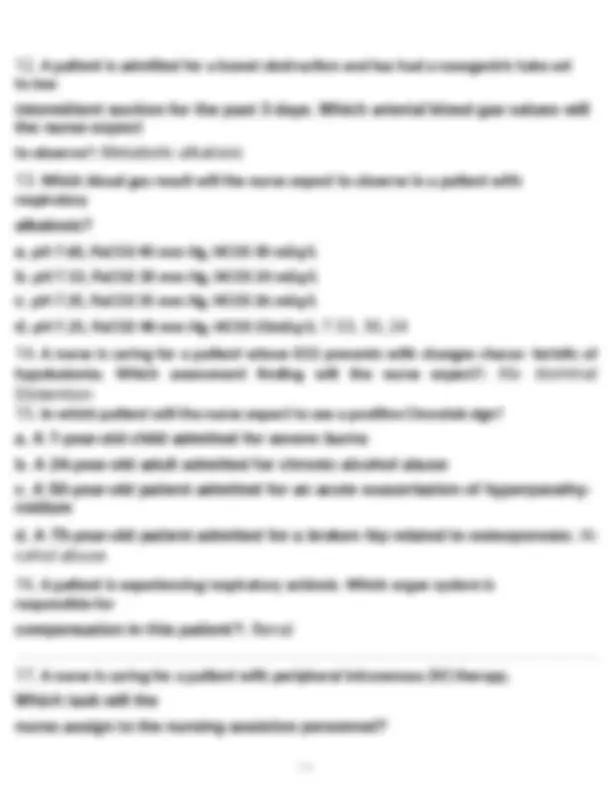
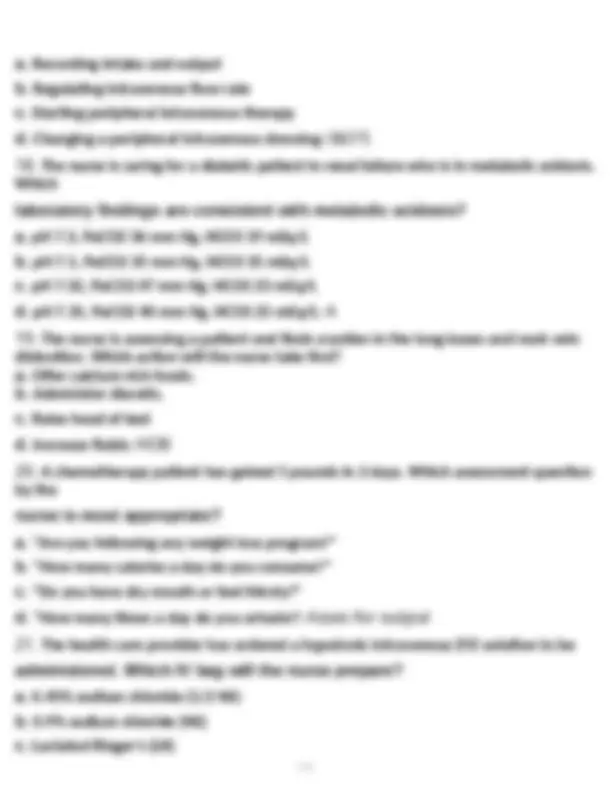
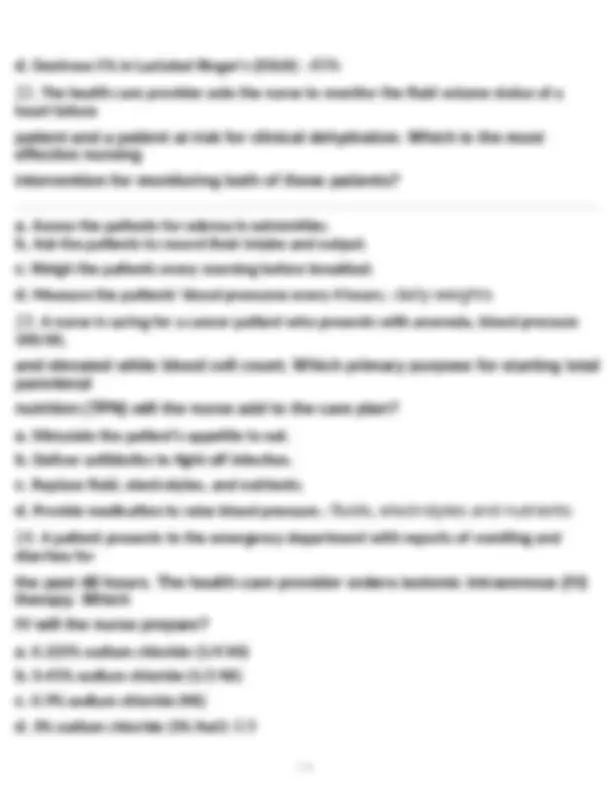
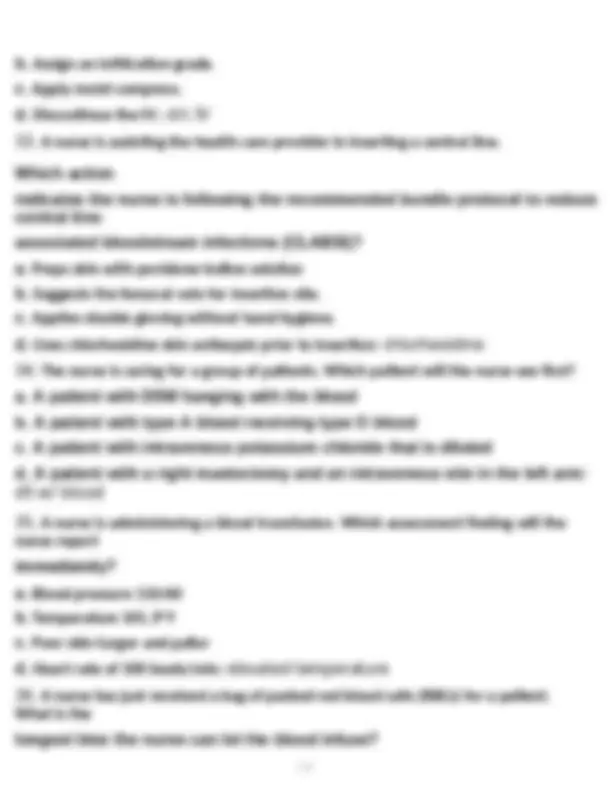
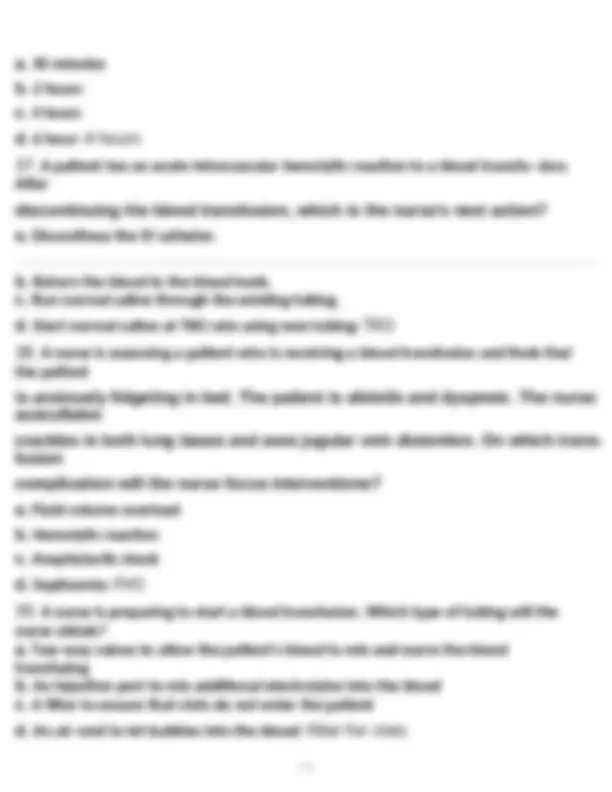
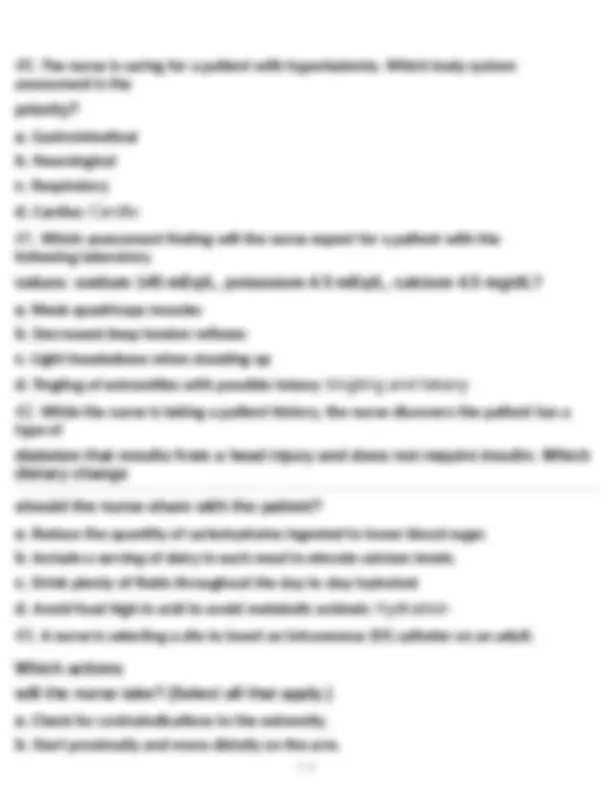
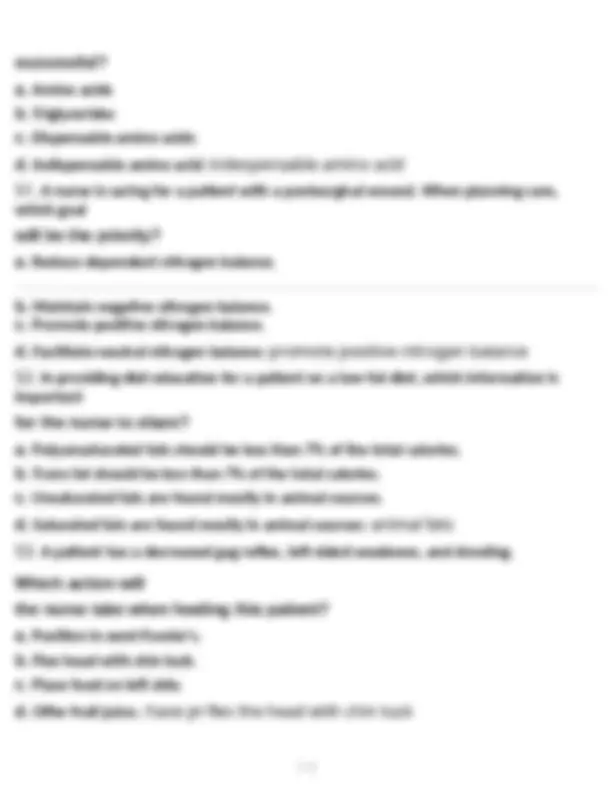
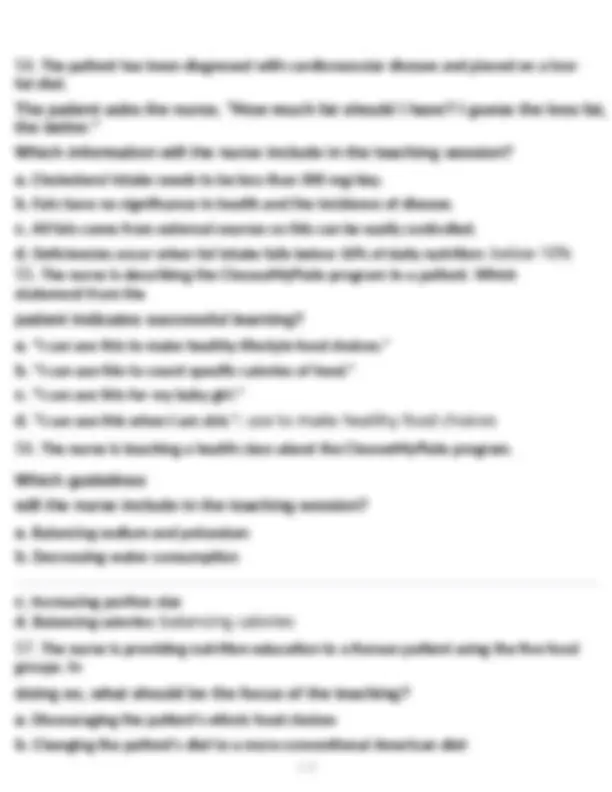
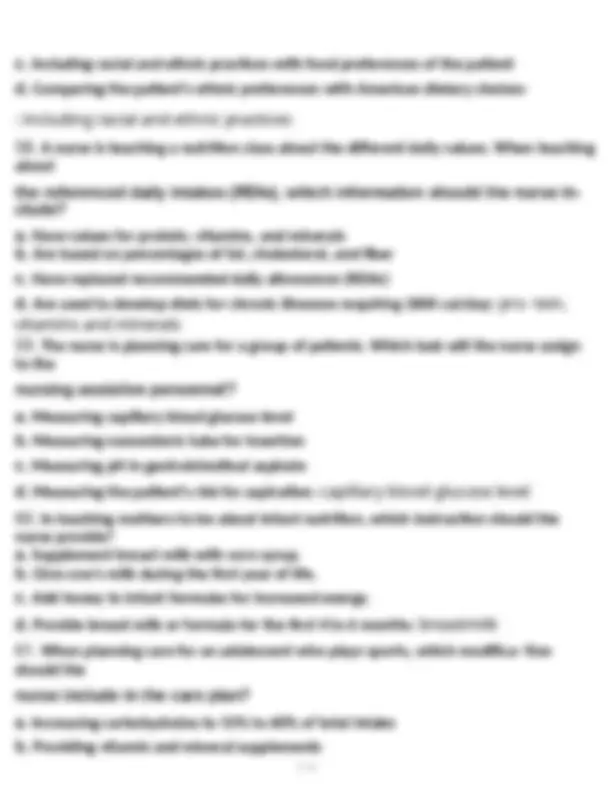
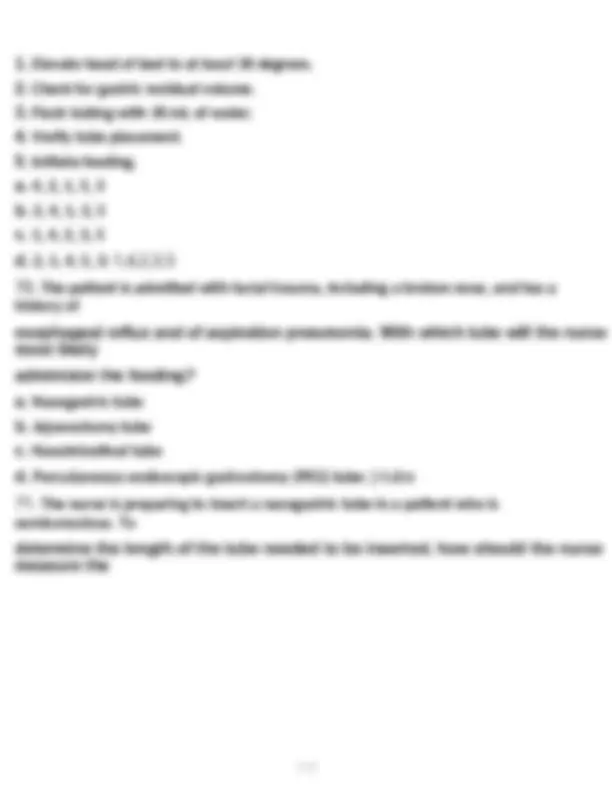
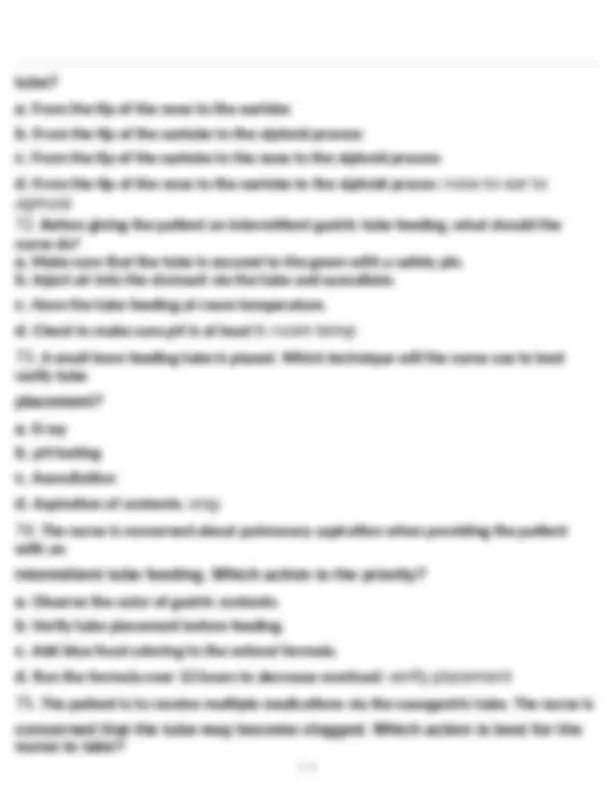
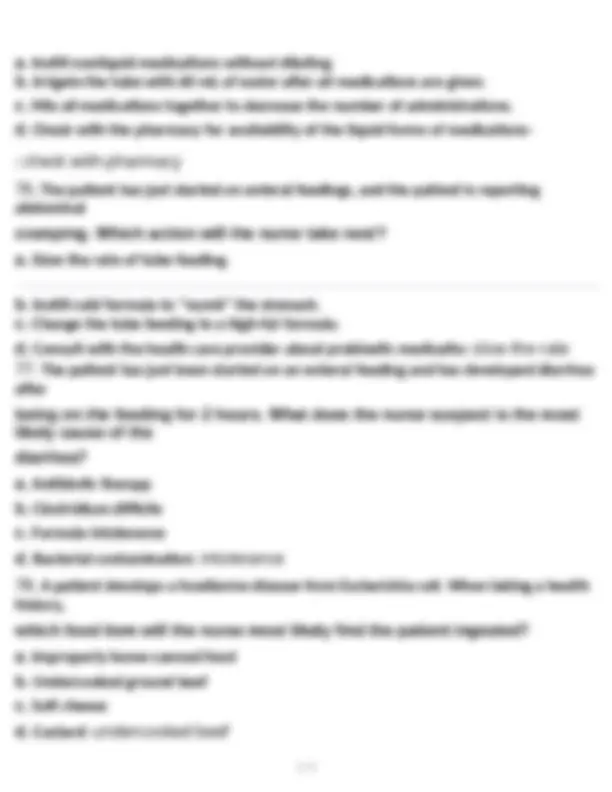
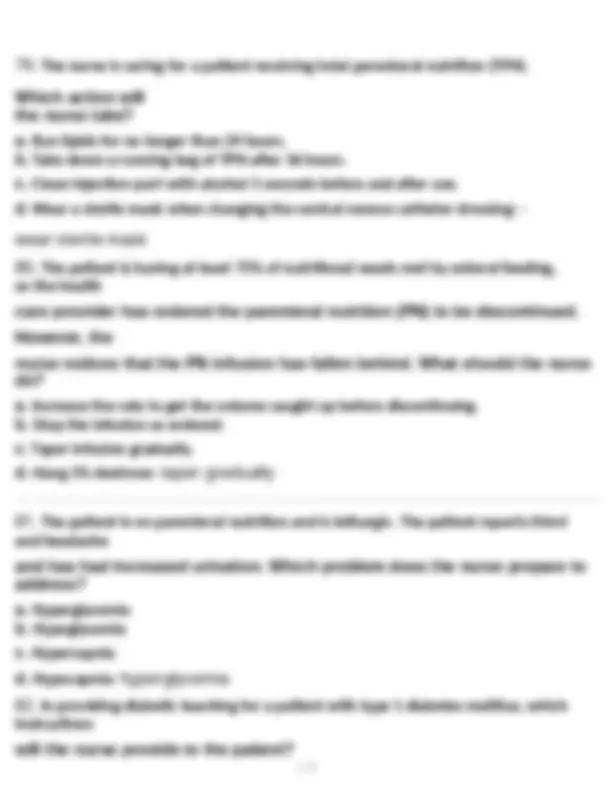
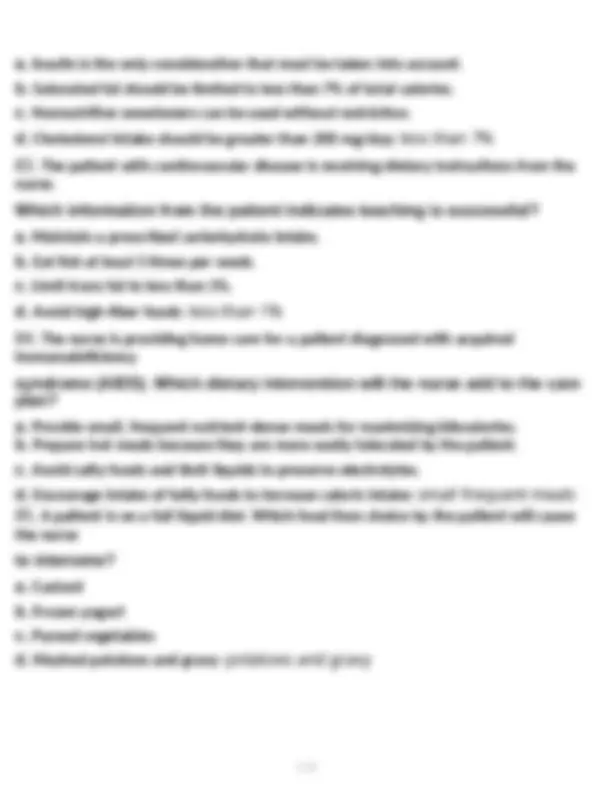
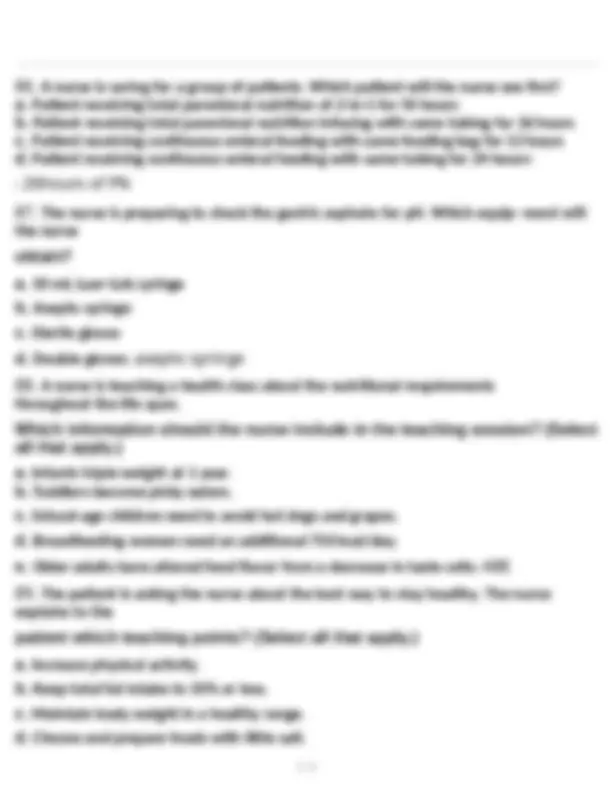
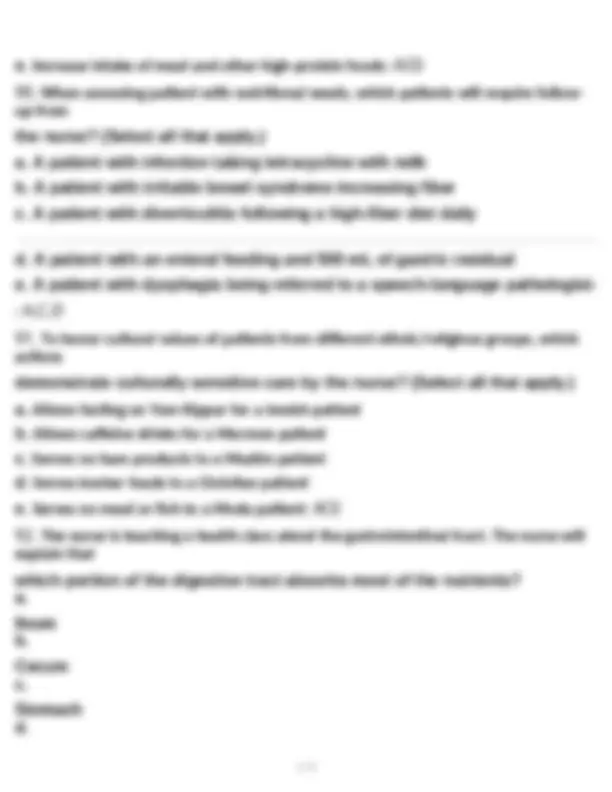
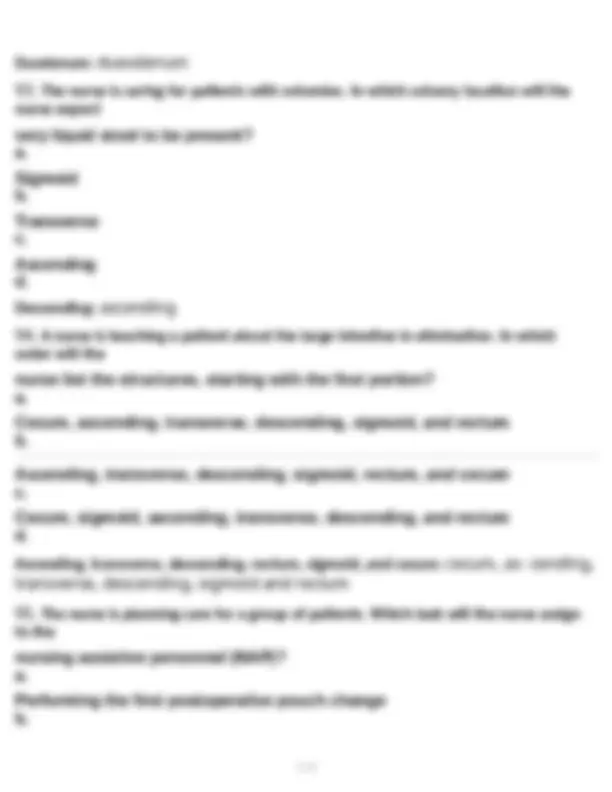
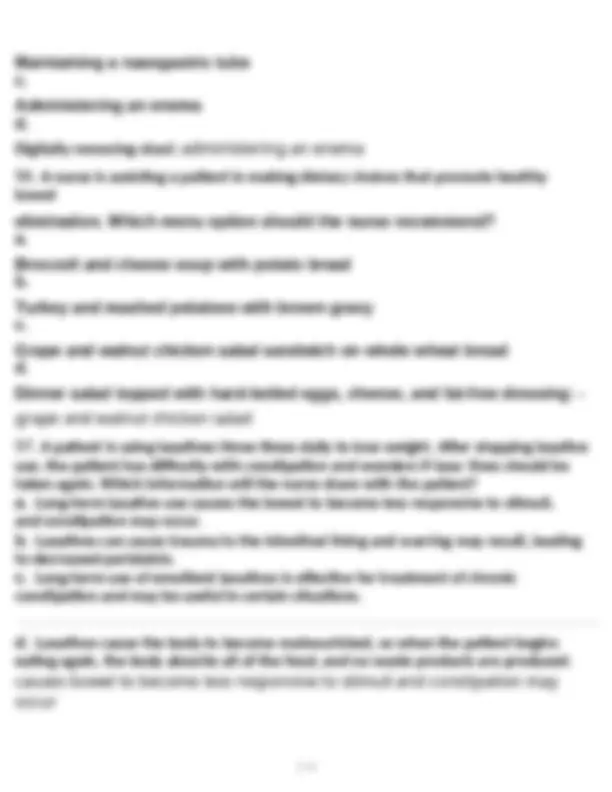
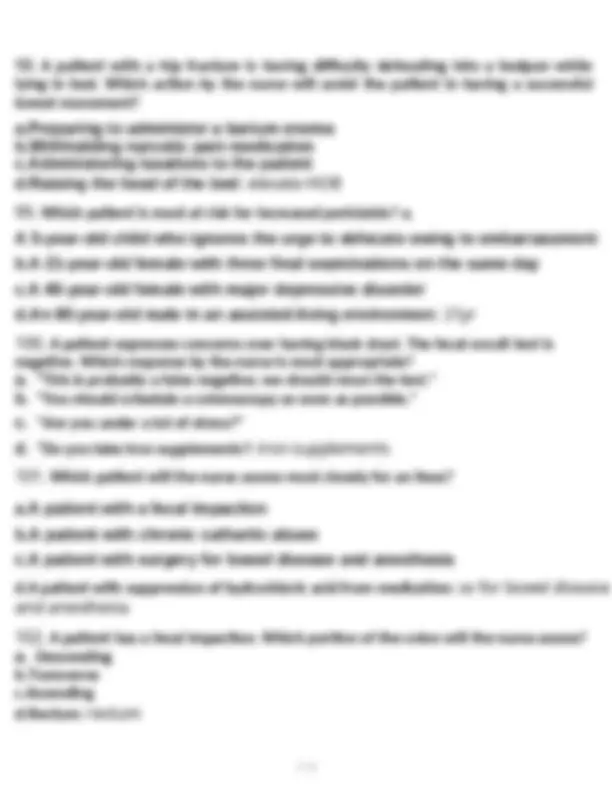

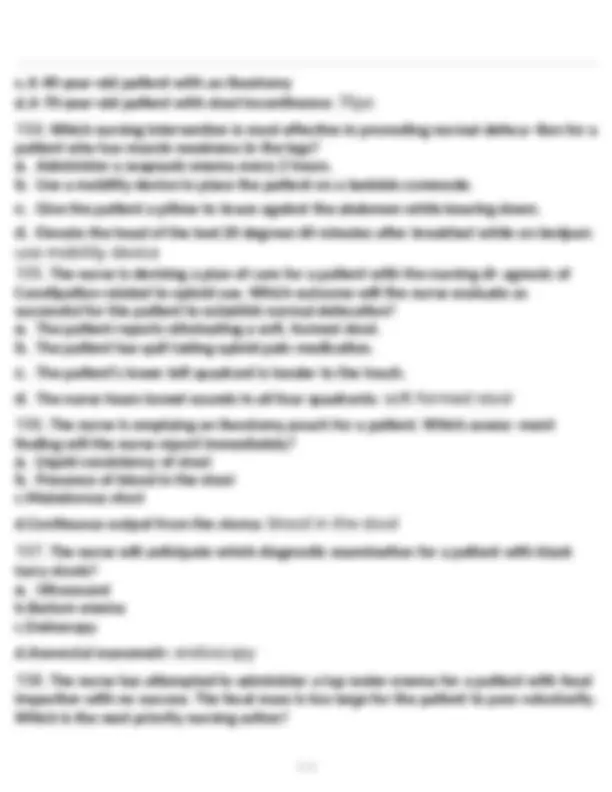
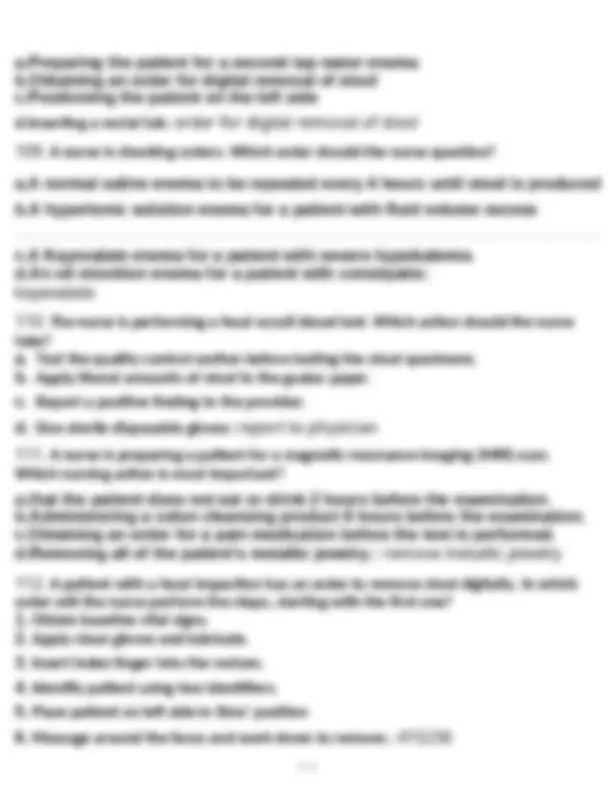
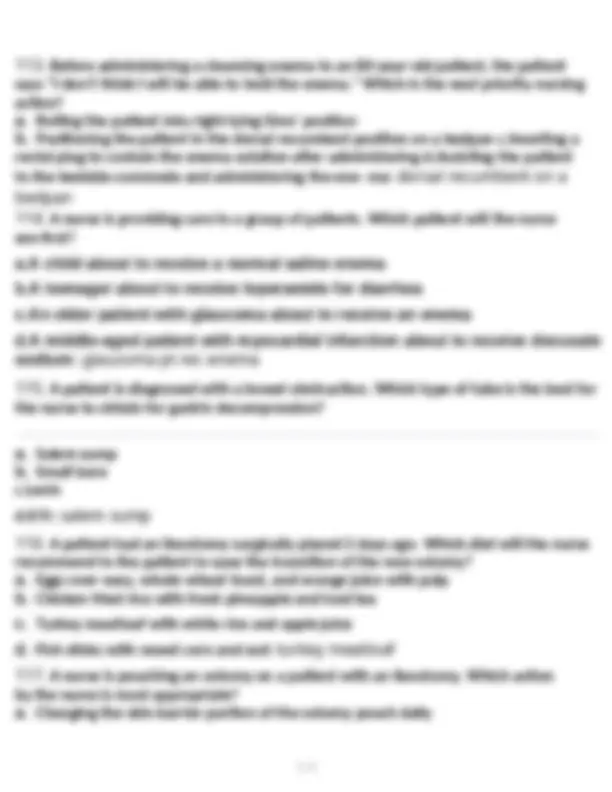
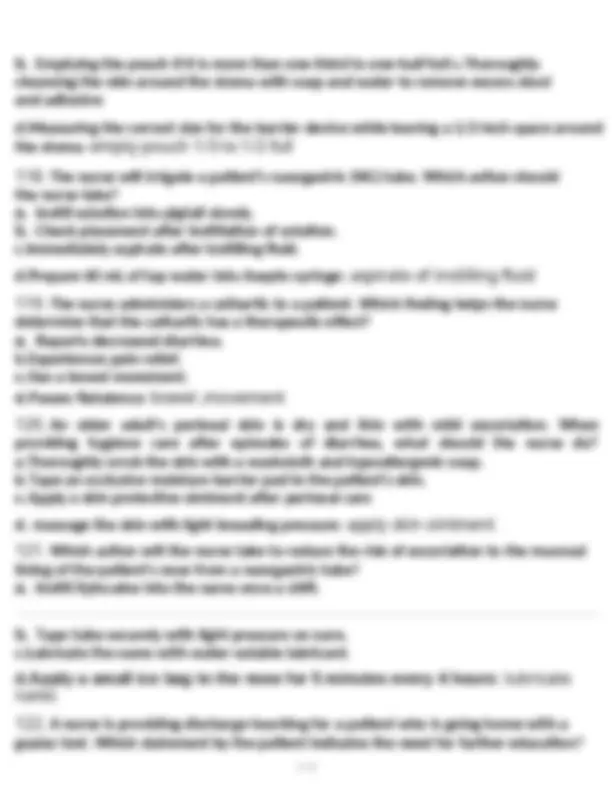
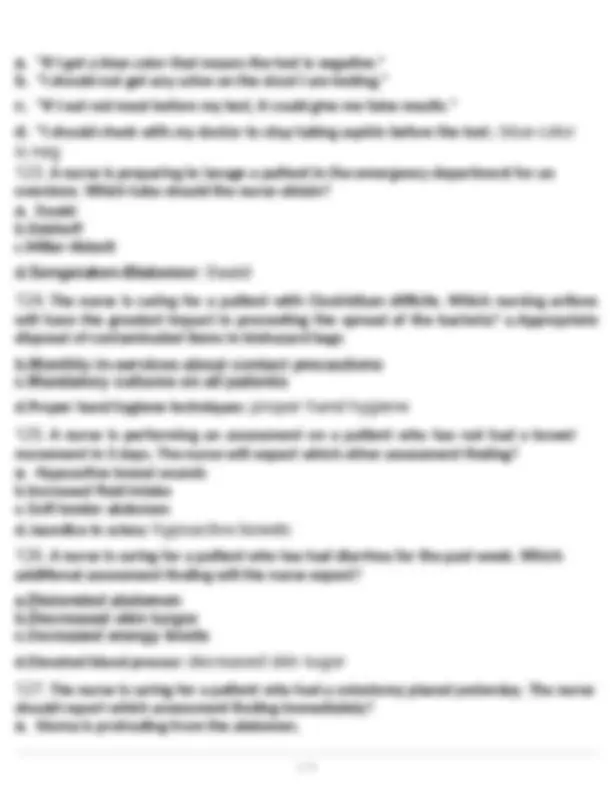
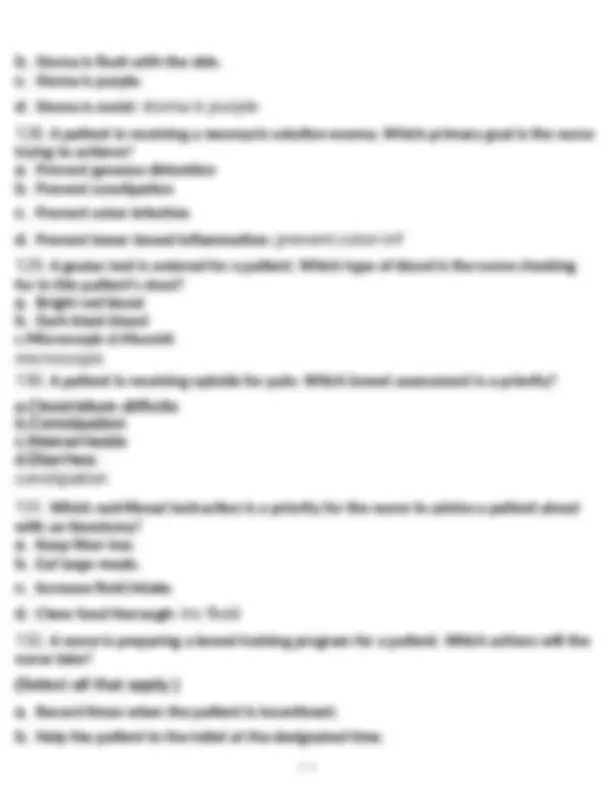
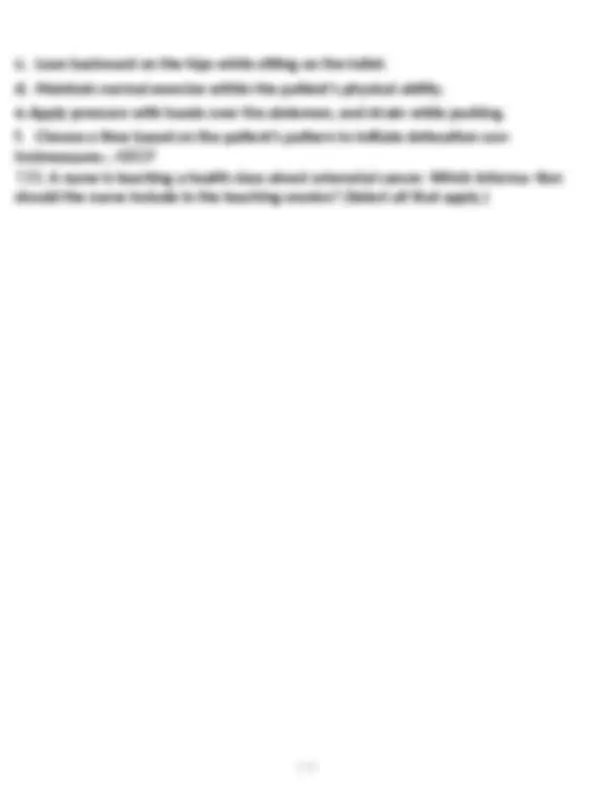
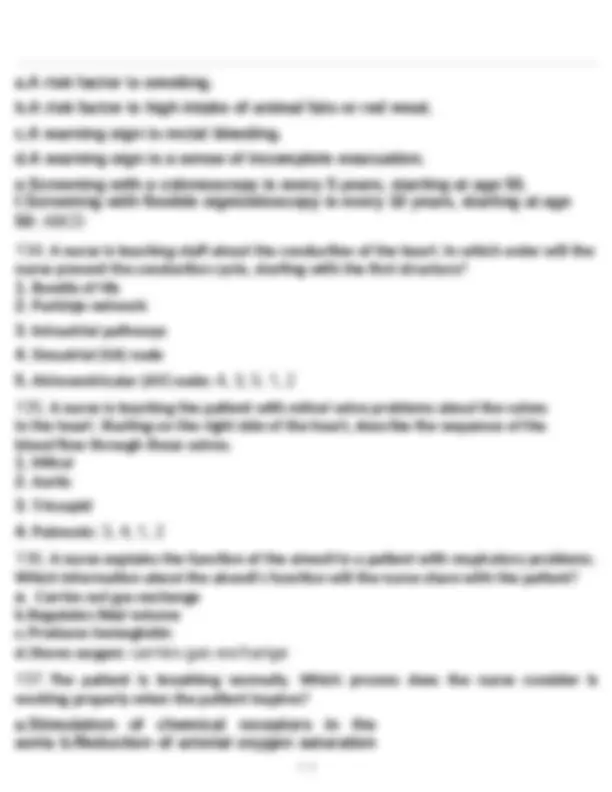
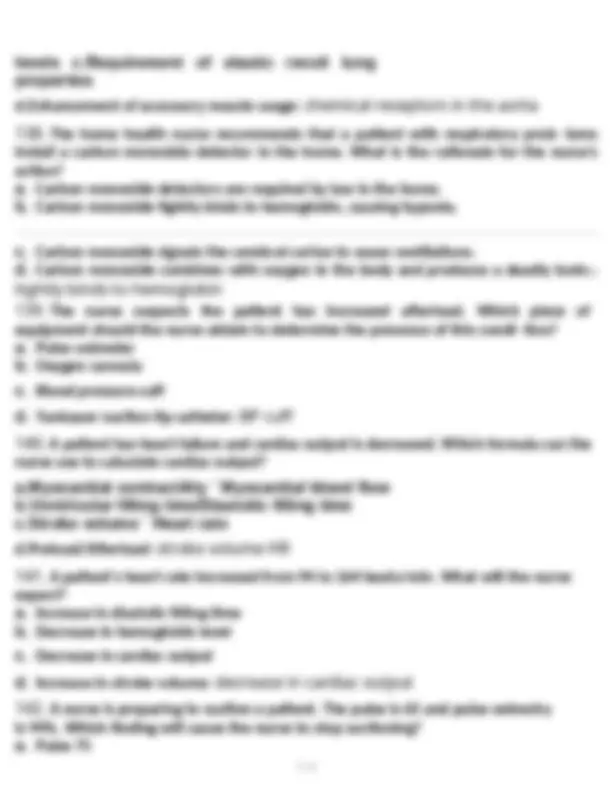
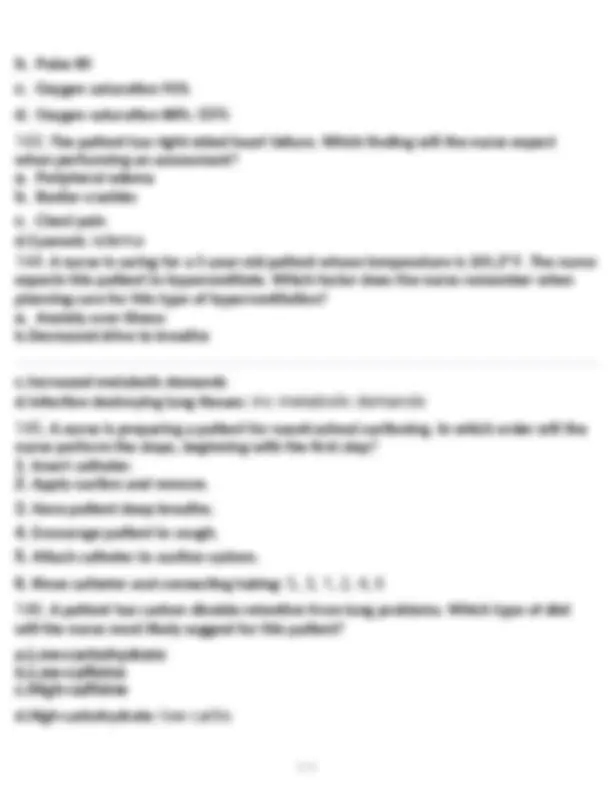
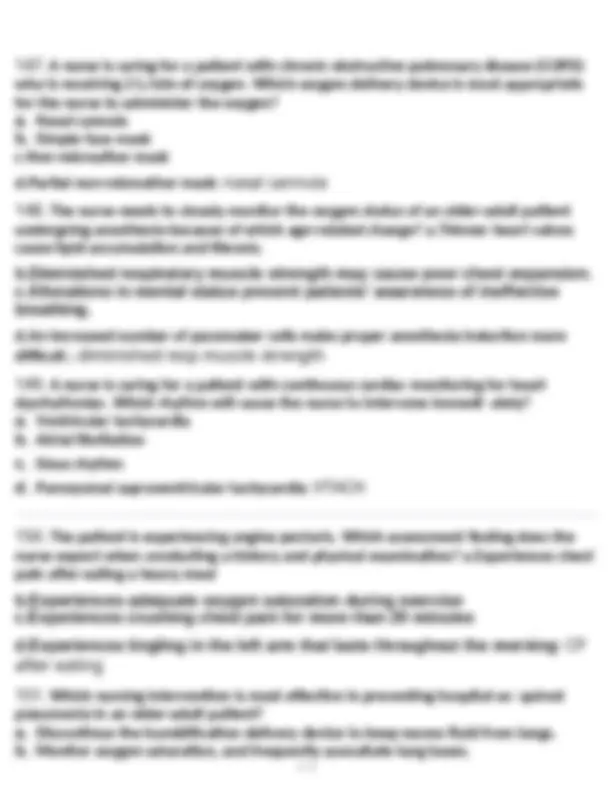

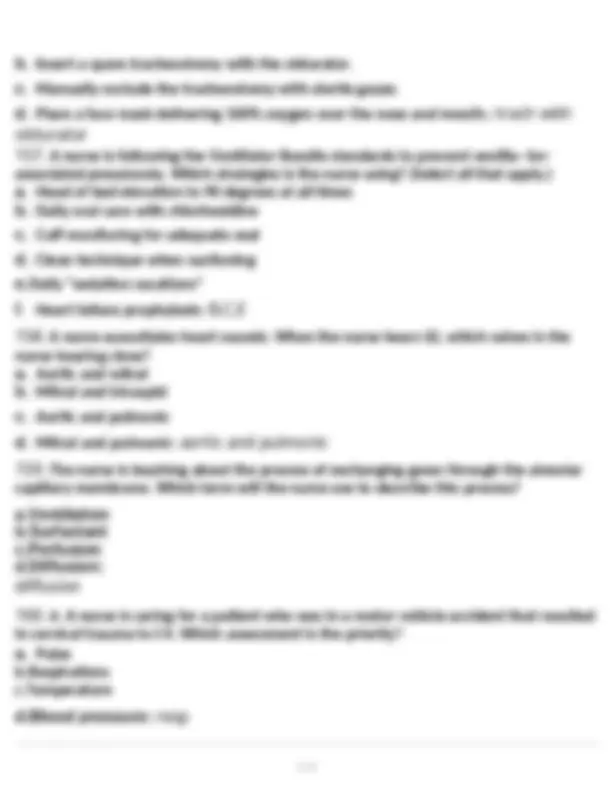
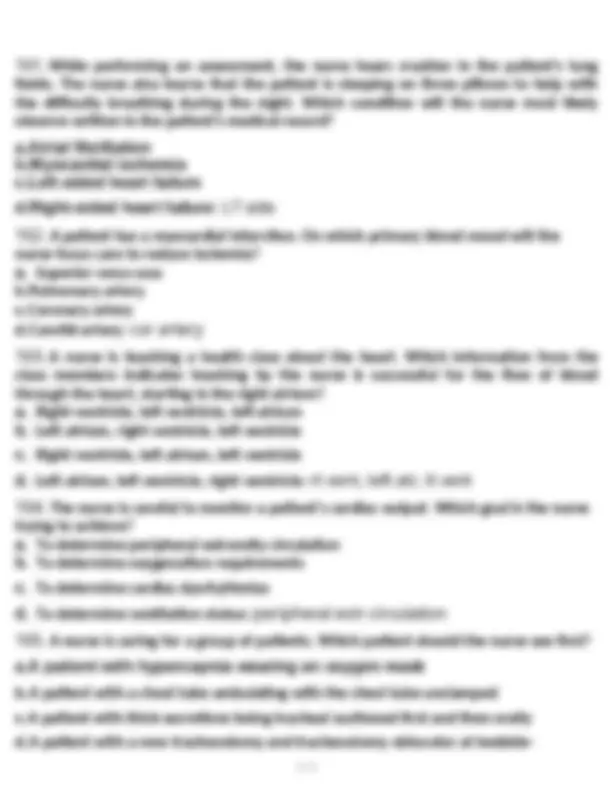
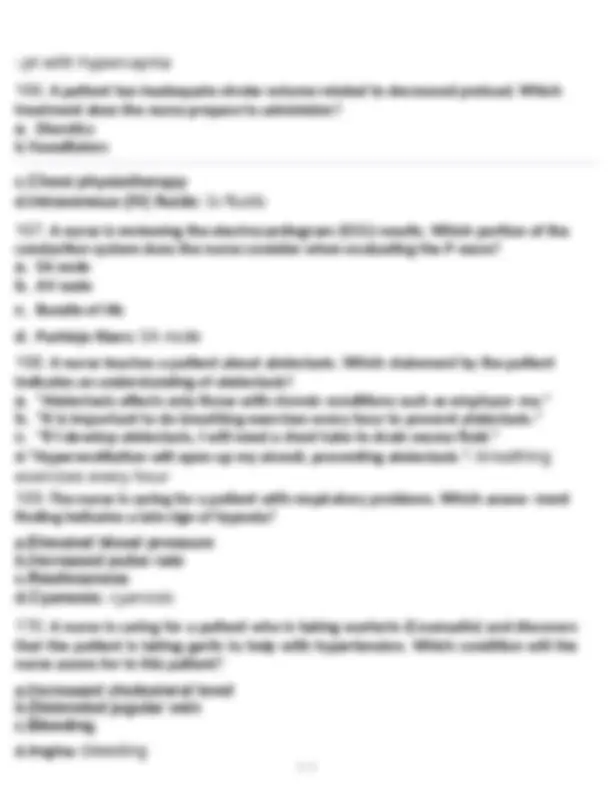
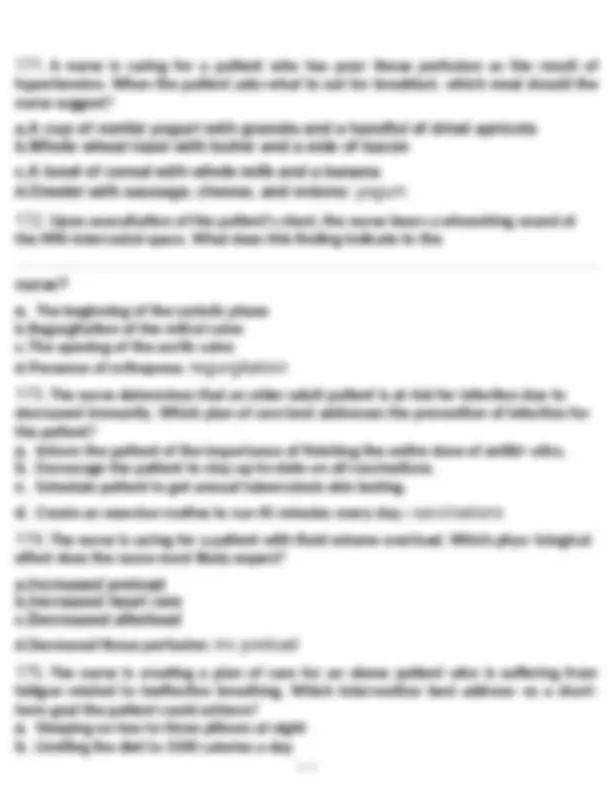
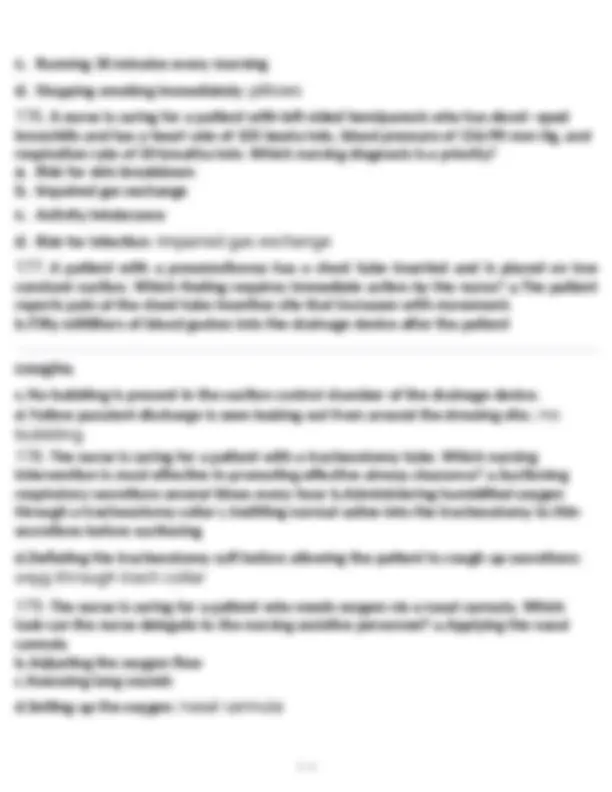
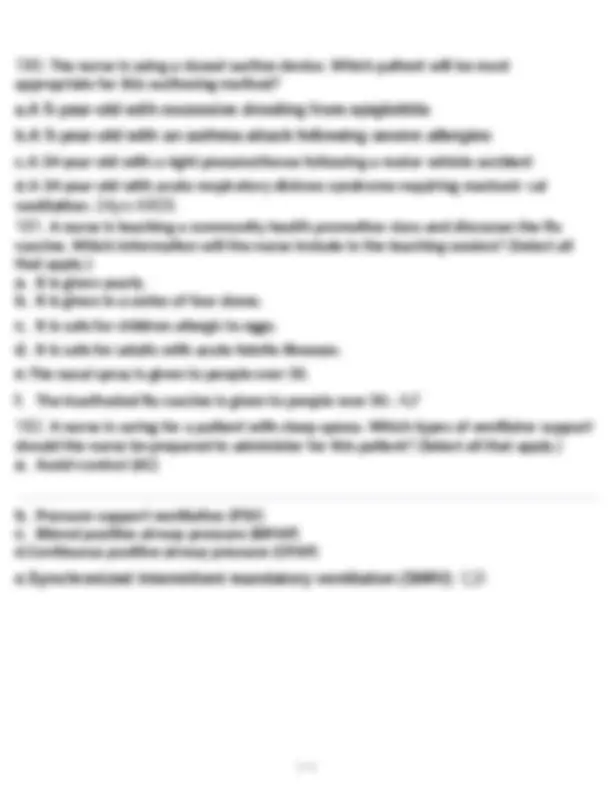


Study with the several resources on Docsity

Earn points by helping other students or get them with a premium plan


Prepare for your exams
Study with the several resources on Docsity

Earn points to download
Earn points by helping other students or get them with a premium plan
Community
Ask the community for help and clear up your study doubts
Discover the best universities in your country according to Docsity users
Free resources
Download our free guides on studying techniques, anxiety management strategies, and thesis advice from Docsity tutors
A comprehensive set of multiple-choice questions and answers covering various aspects of fluid, electrolyte, and acid-base balance in nursing. it's designed to help students prepare for exams by testing their understanding of key concepts such as osmosis, fluid shifts, electrolyte imbalances (sodium, potassium, calcium), acid-base disorders (acidosis, alkalosis), and intravenous fluid therapy. The questions cover clinical scenarios and require application of knowledge to real-world situations, enhancing learning and retention.
Typology: Exams
1 / 46

This page cannot be seen from the preview
Don't miss anything!







































a. Recording intake and output b. Regulating intravenous flow rate c. Starting peripheral intravenous therapy d. Changing a peripheral intravenous dressing: I&O'S
d. Dextrose 5% in Lactated Ringer's (D5LR): .45%
mL/hr. The nurse is using microdrip gravity drip tubing. Which rate will the nurse calculate for the minute flow rate (drops/min)?: 125 drops per min
b. Assign an infiltration grade. c. Apply moist compress. d. Discontinue the IV.: d/c IV
c. Choose a vein with minimal curvature. d. Choose the patient's dominant arm. e. Select a vein that is rigid. f. Avoid areas of flexion: check for contraindications choose vein with minimal curvature avoid flexion
successful? a. Amino acids b. Triglycerides c. Dispensable amino acids d. Indispensable amino acid: indespensable amino acid
c. Decreasing protein intake to 0.75 g/kg/day d. Limiting water before and after exercise: carbohydrates 55% to 60%
tube? a. From the tip of the nose to the earlobe b. From the tip of the earlobe to the xiphoid process c. From the tip of the earlobe to the nose to the xiphoid process d. From the tip of the nose to the earlobe to the xiphoid proces: nose to ear to xiphoid
a. Instill nonliquid medications without diluting. b. Irrigate the tube with 60 mL of water after all medications are given. c. Mix all medications together to decrease the number of administrations. d. Check with the pharmacy for availability of the liquid forms of medications- : check with pharmacy